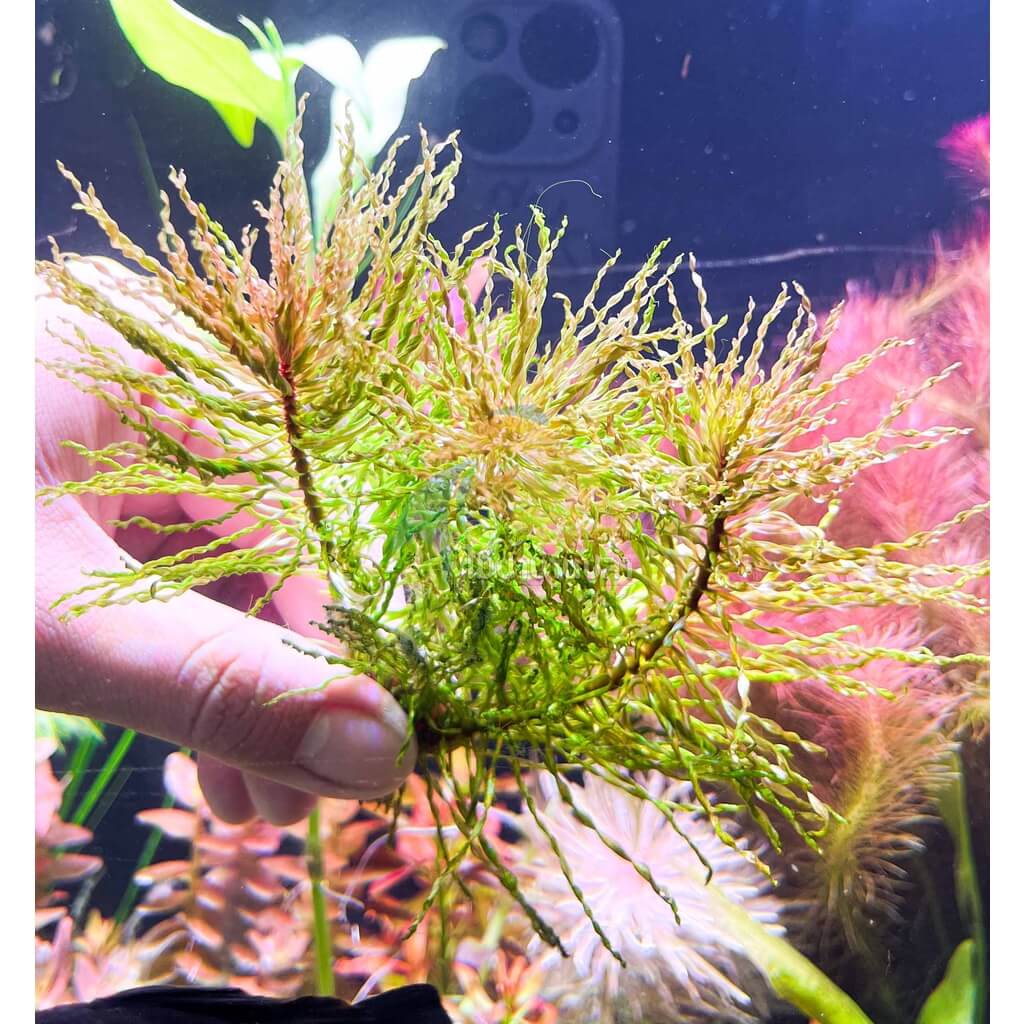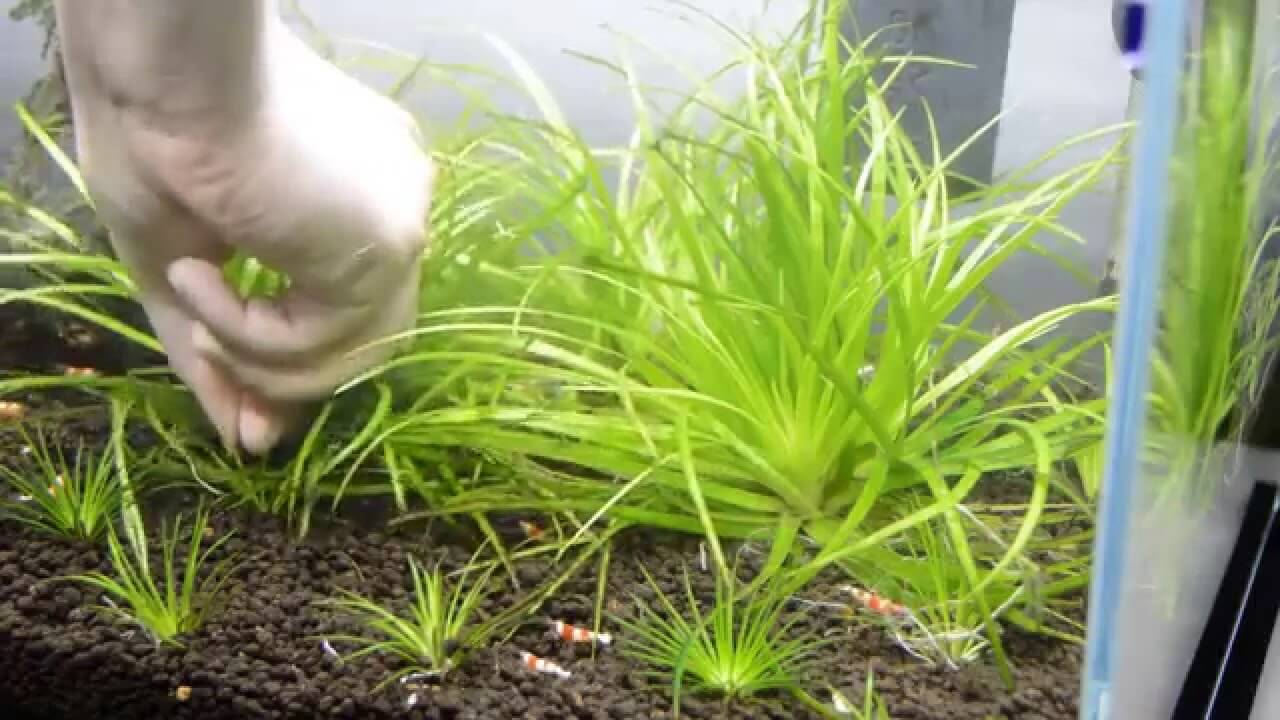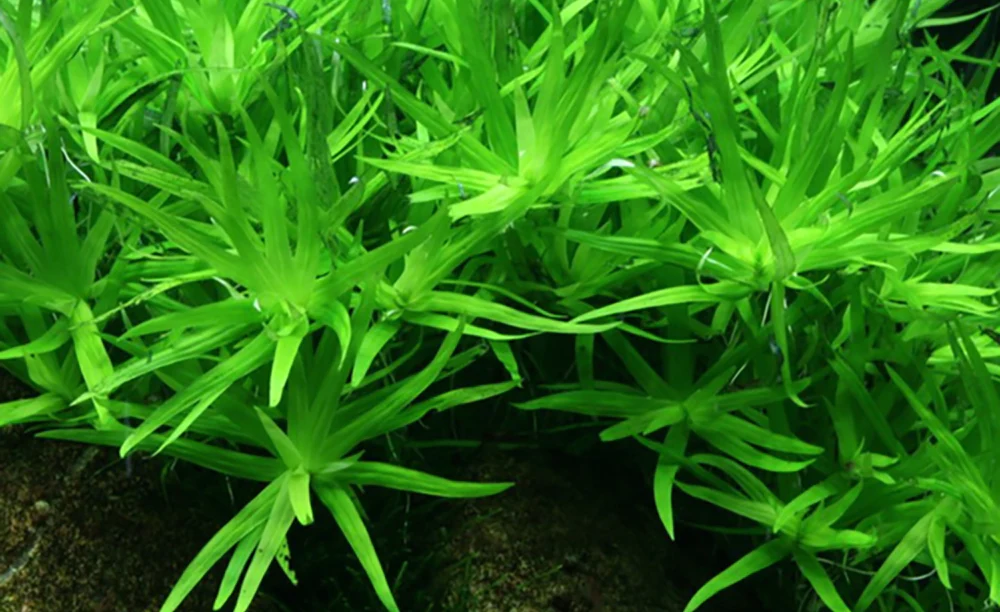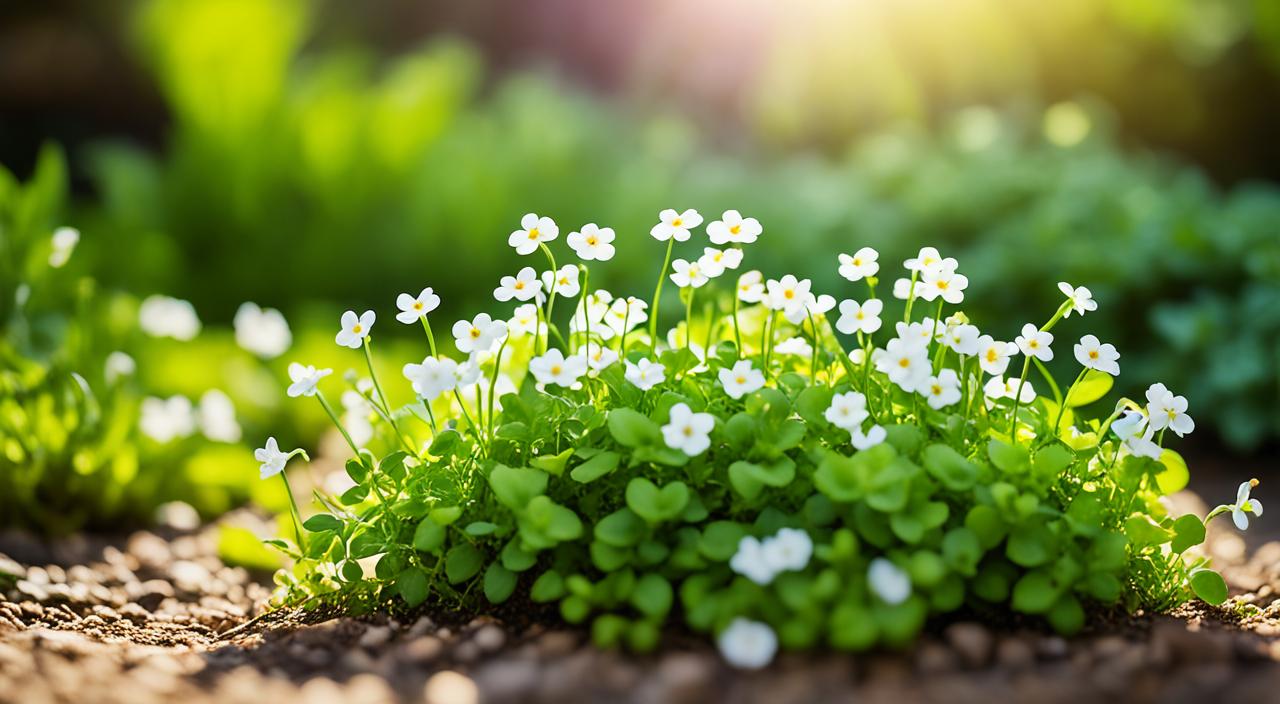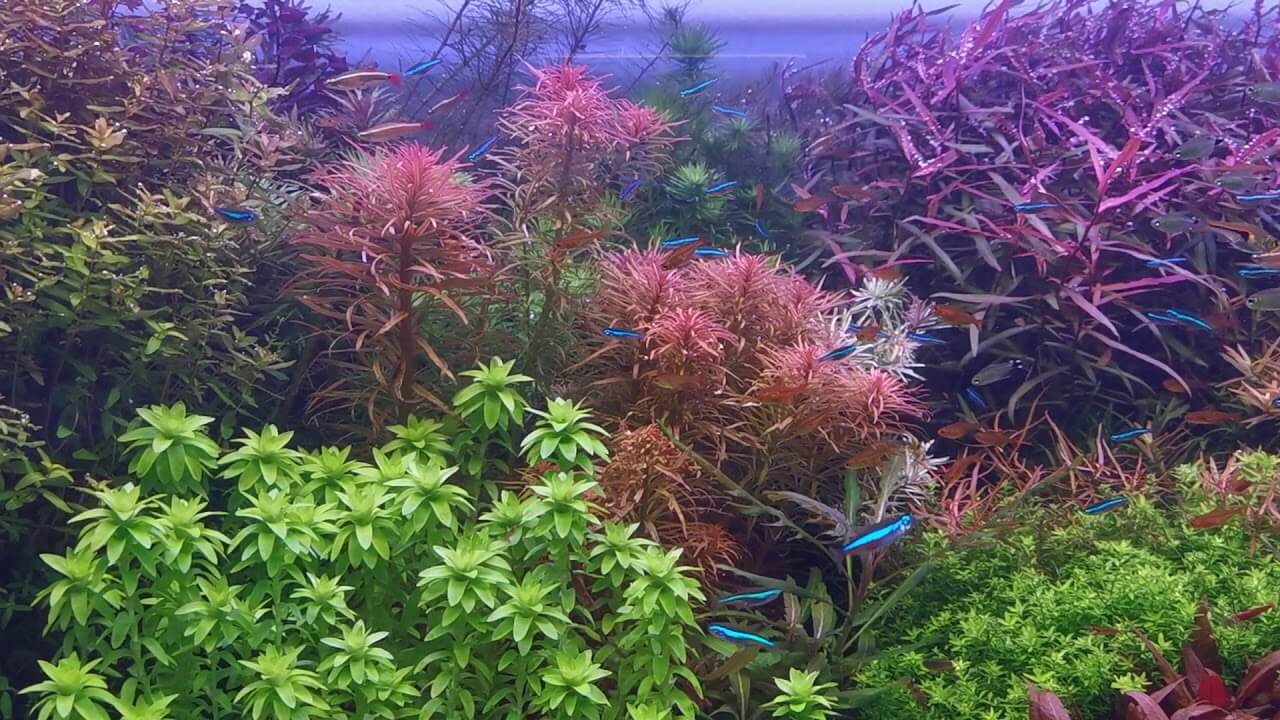Welcome to our comprehensive guide on Ludwigia tornado, Twister or Curly Ludwigia. If you’re looking to add a visually striking and unique plant to your aquarium, Ludwigia tornado is an excellent choice. Its spiral-shaped leaves and stunning red colouration make it a captivating centrepiece for any aquascape.
Ludwigia tornado is a fast-growing stem plant that requires specific care to thrive. This guide will walk you through everything you need to know about caring for Ludwigia tornado, including lighting requirements, propagation methods, suitable tank mates, and more.
Key Takeaways:
- Ludwigia tornado is a visually striking red aquarium plant with spiral-shaped leaves.
- It requires high light and CO2 supplementation for optimal growth.
- Regular trimming is essential to maintain its unique shape.
- Propagation is simple through cuttings that can be replanted in the substrate.
- It is recommended for the background or midground of a tank.
Brief Overview Of Ludwigia tornado
Ludwigia tornado, or Twister or Curly Ludwigia, is a captivating plant that adds a unique touch to any aquascape. Its spiral-shaped leaves create a visually striking effect, making it a popular choice among aquascapers. This plant is a fast grower, but proper lighting and CO2 supplementation are essential for its growth and development. Ludwigia tornado is relatively easy to propagate through cuttings, making it a versatile addition to any aquarium. Its unique leaf shape and height make it an excellent choice for the background or midground of a tank. With its fascinating appearance and vibrant colours, the Ludwigia tornado will surely be the centrepiece of any aquascape.
Ludwigia Tornado Information Table:
| Characteristic | Description |
|---|---|
| 1. Scientific Name: | Ludwigia inclinata var. verticillata ‘Tornado’ |
| 2. Common Names: | Ludwigia Tornado, Ludwigia Tornado Spiral |
| 3. Origin: | Cultivar, origin based on Ludwigia inclinata |
| 4. Height: | Can grow up to 20 inches (50 cm) or more |
| 5. Growth Rate: | Medium to Fast |
| 6. Colour: | Leaves range from green to deep red, depending on light and nutrient conditions |
| 7. Aquarium Placement: | Midground to Background |
| 8. Water Type: | Freshwater |
| 9. pH: | 5.0 – 7.0 |
| 10. Care Level: | Advanced |
| 11. Light Requirements: | Cuttings: new plants can be grown from stem cuttings |
| 12. CO2 Requirements: | High; 50-70 PAR (Photosynthetically Active Radiation), 6500-7000 Kelvin, optimal LUX varies but generally above 5000 lux for vibrant colouration |
| 13. Temperature: | 68-82°F (20-28°C) |
| 14. Flow Rate: | Moderate to High; benefits from some water movement |
| 15. Propagation: | Cuttings; new plants can be grown from stem cuttings |
| 16. Feed Type: | Requires nutrient-rich substrate and liquid fertilizers for optimal growth |
The light requirements for Ludwigia Tornado are crucial for its care. High lighting, with a PAR value of 50-70, is necessary to promote the plant’s characteristic spiral growth and vibrant colouration. A Kelvin rating of 6500-7000 mimics natural daylight and encourages healthy photosynthesis. LUX levels should be high, generally above 5000 lux, to ensure the plant receives enough light intensity. Adequate lighting, CO2 supplementation, and proper nutrient availability will help Ludwigia Tornado thrive and display its full-colour potential in an aquarium setting.
Origins And Habitat
Ludwigia tornado is native to Cuba, where it is found in the wild. It thrives in freshwater habitats such as rivers, streams, and marshes. In its natural habitat, Ludwigia tornado grows submerged in water, with its leaves reaching towards the surface to absorb sunlight. It requires warm water conditions and a nutrient-rich substrate for optimal growth. While native to Cuba, Ludwigia tornado has become widely cultivated and is now available in the aquarium trade, making it a popular choice among aquascaping enthusiasts worldwide.
Morphological Characteristics
Ludwigia tornado is known for its distinctive spiral-shaped leaves, which make it a visually captivating addition to any aquarium. The leaves are long and slender, forming an intriguing spiral formation that adds a unique touch to the overall aesthetic of the tank. Initially, the leaves have a light green colour, but as they approach the water’s surface and receive more intense light, their tips turn reddish, creating a beautiful contrast. The height of Ludwigia tornado can vary from 5 to 20 inches, depending on the specific tank conditions and care provided. This plant also produces beautiful yellow flowers, enhancing its visual appeal.
| Characteristics | Description |
|---|---|
| Leaf Shape | The leaves of the Ludwigia tornado start as light green and develop reddish tips as they receive more intense light near the water’s surface. |
| Growth Pattern | Ludwigia tornado is a stem plant that grows in an upright manner, reaching heights of 5 to 20 inches, depending on the tank conditions. |
| Leaf Color | Ludwigia tornado is a stem plant that grows uprightly, reaching heights of 5 to 20 inches, depending on the tank conditions. |
| Flower Color | Ludwigia tornado produces beautiful yellow flowers, adding further visual interest to the aquarium. |
With its unique leaf shape, growth pattern, and vibrant colours, the Ludwigia tornado is undoubtedly a standout plant in any aquascape.
Placement And Lighting

Ludwigia tornado, with its unique spiral-shaped leaves, is best placed in the background or midground of an aquarium. This positioning lets the plant showcase its captivating features while creating a visually appealing focal point in your aquascape. When considering the placement of the Ludwigia tornado, it is crucial to ensure that it receives the right lighting conditions for optimal growth and vibrant colours.
High-intensity lighting is essential for the Ludwigia tornado to thrive. Positioning the plant in an area of the tank where it can receive direct or indirect light is recommended. Without sufficient lighting, Ludwigia tornado may struggle to develop its characteristic spiral shape and appear leggy and pale. By providing adequate lighting, you can encourage compact and dense growth, enhancing the visual appeal of this unique plant.
What Are Good Tank Mates?
Good Tank Mates
Ludwigia tornado can thrive alongside various fish and invertebrates as long as they are compatible with its care requirements. When selecting tank mates, it is essential to consider their compatibility with the water parameters and care requirements of the Ludwigia tornado. Here are some good tank mates for Ludwigia tornado:
- Tetras
- Guppies
- Rasboras
- Dwarf cichlids
- Shrimp
- Snails
Tank mates that fall into these categories are peaceful and will not disturb the growth of the Ludwigia tornado or damage its delicate leaves. Additionally, consuming algae and detritus, shrimp, and snails can contribute to a clean tank environment.
Fish Species To Avoid
While Ludwigia tornado can coexist with many fish species, certain types of fish should be avoided as tank mates. These include:
- Aggressive or fin-nipping fish that may damage the delicate leaves of Ludwigia tornado.
- Large herbivorous fish that graze on plants and may consume Ludwigia tornado.
Examples of fish species to avoid as tank mates for Ludwigia tornado include larger cichlids, barbs, and some species of catfish. It is crucial to conduct thorough research on the compatibility of your desired fish species with the Ludwigia tornado before adding them to your tank. Ensuring the safety and health of the plant is of utmost importance.
Feeding (Fertilization)
Ludwigia tornado benefits from regular fertilization to ensure optimal growth and colouration. Providing the plant with essential nutrients and trace elements is crucial for its health and vibrancy.
To fertilize Ludwigia tornado, you can use liquid fertilizers and root tabs. Liquid fertilizers can be added directly to the water column, while root tabs can be inserted into the substrate near the plant’s roots. Both methods can effectively deliver nutrients to the plant.
The amount and frequency of feeding Ludwigia tornado will depend on the specific nutrient requirements of your tank. Following the instructions provided with the fertilizers you are using is recommended, as over-fertilization can lead to algae growth and other issues.
Monitor the plant’s growth and observe its overall health. If you notice slow growth or pale leaves, it may indicate that your Ludwigia tornado requires more nutrients. On the other hand, if you observe excessive growth or algae problems, it may be a sign of over-fertilization. Adjust the fertilization regimen accordingly to maintain healthy growth and vibrant colours.
How Much And How Often To Feed
The specific dosage and frequency of fertilization will depend on various factors, including the size of your tank, the nutrient levels in your water, and the particular needs of the Ludwigia tornado. It is essential to consider these factors when determining how much and how often to feed the plant.
As a general guideline, you can start by following the manufacturer’s recommended dosage and frequency for the fertilizers you use. However, it is essential to note that every aquarium is unique, and you may need to make adjustments based on your tank’s specific conditions.
Regularly observe the growth and colouration of the Ludwigia tornado. If the plant shows signs of nutrient deficiency, such as pale or yellowing leaves, you may need to increase the dosage or frequency of fertilization. Conversely, if you notice excessive growth or algae issues, it may indicate over-fertilization, and you may need to reduce the amount or frequency of fertilization.
Remember to test your water regularly to monitor nutrient levels and adjust your fertilization regimen accordingly. By providing Ludwigia tornado with the right amount of nutrients, you can ensure its healthy growth and beautiful appearance in your aquarium.
| Fertilization Method | Description |
|---|---|
| Liquid Fertilizers | These are water-soluble fertilizers that can be added directly to the water column. They provide essential nutrients and trace elements that Ludwigia tornado can absorb through its leaves. |
| Root Tabs | Root tabs are small tablets or capsules containing nutrients that can be inserted into the substrate near the plant’s roots. They slowly release nutrients, ensuring a steady supply for the plant. |
CO2 Injection
Ludwigia tornado benefits from CO2 supplementation in the aquarium. CO2 injection helps promote healthy and robust growth and vibrant colours in the leaves. Different types of CO2 injection methods are available, including pressurized CO2 systems, DIY CO2 setups, and liquid carbon supplements. Pressurized CO2 systems provide a more reliable and precise way of injecting CO2 into the aquarium, while DIY setups and liquid carbon supplements can be more budget-friendly options. It is crucial to monitor CO2 levels and ensure they remain within the recommended range for optimal plant growth.
Care
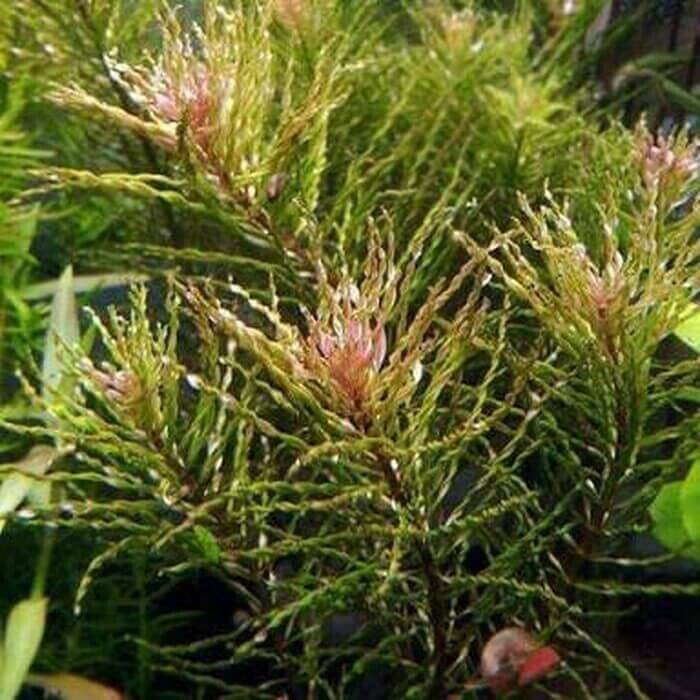
Proper care is vital for the health and growth of Ludwigia tornado. To ensure the well-being of this unique plant, it is essential to maintain stable water parameters, provide suitable filtration, and promote adequate water flow in the tank.
Planted Tank Parameters
When creating a planted tank for the Ludwigia tornado, it is crucial to maintain specific parameters that favour its growth. The pH range should be maintained between 4.5 and 7.0. Providing a moderate level of care will ensure the plant receives the necessary nutrients and environmental conditions for optimal development.
Water Quality
Good water quality is essential for the health of the Ludwigia tornado. Regular water testing should be conducted to monitor parameters such as pH, ammonia, nitrite, nitrate, and phosphate. Maintaining appropriate levels will help prevent nutrient imbalances and the onset of algae growth.
Filtration
Efficient filtration is vital to maintain good water quality and remove organic waste. A suitable filtration system, such as a canister filter or a hang-on-back filter, should be chosen to provide adequate mechanical and biological filtration. This will help to keep the tank clean and create a healthy environment for the Ludwigia tornado.
Flow
Gentle water flow is beneficial for Ludwigia tornado. It helps distribute nutrients evenly throughout the tank and prevents stagnant areas. Adjustable powerheads or circulation pumps can create the ideal flow and ensure that the plant receives sufficient nutrients and CO2.
| Parameter | Ideal Range |
|---|---|
| pH | 4.5 – 7.0 |
| Care Level | Moderate |
| Water Quality | Regular testing and maintenance |
| Filtration | Efficient mechanical and biological filtration |
| Flow | Gentle water flow |
Aquarium Maintenance
Testing Water Conditions
Regular aquarium maintenance is essential to keep Ludwigia tornado healthy and thriving. One crucial aspect of maintenance is testing the water conditions regularly. By monitoring parameters such as pH, ammonia, nitrite, nitrate, and phosphate, you can ensure that the water chemistry remains within the appropriate range for optimal plant growth. Testing kits are available to measure these parameters accurately and efficiently. Corrective actions can be taken promptly to maintain a stable and healthy aquatic environment if any imbalances or issues are detected.
How To Set Up Your Aquarium Tank
When setting up your aquarium tank for Ludwigia tornado, it’s essential to create an environment that promotes the plant’s growth and overall well-being. Begin by providing a nutrient-rich substrate to support the plant’s root development and nutrient uptake. Additionally, ensure the tank receives adequate lighting, as Ludwigia tornado thrives in high-intensity light conditions. Consider using a lighting system with adjustable brightness or a timer to mimic natural daylight cycles. If desired, CO2 supplementation can be introduced to enhance plant growth. Finally, carefully consider the placement of the plant in the tank to maximize its visual impact and overall aesthetic appeal.
Propagation Methods
Propagation is an essential aspect of maintaining Ludwigia tornado in your aquarium. There are several methods you can use to propagate this plant successfully. One standard method is replanting cuttings from the parent plant in the substrate. To propagate through cuttings, carefully trim a healthy stem with at least a few leaves and remove the lower leaves. Plant the cuttings in the substrate, ensuring the stem is firmly rooted. Over time, these cuttings will grow into new plants, adding to the density and beauty of your aquarium. Regular pruning and replanting will help control the growth and maintain the desired shape and appearance of the Ludwigia tornado.
| Benefits of Regular Aquarium Maintenance | Key Maintenance Tasks |
|---|---|
| Promotes the health and growth of Ludwigia tornado | Regular water testing for pH, ammonia, nitrite, nitrate, and phosphate |
| Prevents imbalances and water quality issues | Providing a nutrient-rich substrate |
| Maintains optimal water chemistry for plant growth | Ensuring adequate lighting and CO2 supplementation |
| Controls excessive plant growth and maintains desired aesthetics | Regular pruning and replanting |
Health And Disease
Monitoring the health of the Ludwigia tornado is crucial to ensure its well-being in the aquarium. Proper care and attention can help prevent and treat common health issues that may arise. By understanding the signs of good health, recognizing signs of poor health, and knowing how to address common health issues, you can keep your Ludwigia tornado thriving in the tank.
Signs Of Good Health
When the Ludwigia tornado is in good health, it will exhibit vibrant colours, robust growth, and the development of new leaves. The leaves should be lush and full, with no discolouration or abnormalities. The plant should continue to grow taller and denser with proper care and nutrition.
Signs Of Poor Health
If the Ludwigia tornado is not thriving, signs of poor health may become evident. Yellowing or browning leaves can indicate nutrient deficiencies, inadequate lighting, or other issues. Stunted growth, leaf loss, or wilting can also indicate poor health. Identifying and addressing these issues promptly is essential to prevent further decline.
Common Health Issues And Treatment
Several common health issues can impact the Ludwigia tornado. Nutrient deficiencies like iron or nitrogen can affect plant growth and colouration. Algae overgrowth can occur if nutrients are imbalanced or inadequate maintenance. Fungal or bacterial infections can also impact the plant’s health and appearance.
It is essential to adjust the water parameters and provide appropriate fertilization to address nutrient deficiencies. Liquid fertilizers or root tabs can help supplement crucial nutrients. Proper lighting and CO2 levels can support healthy growth and prevent algae overgrowth. Treatment with appropriate medications or remedies may be necessary if fungal or bacterial infections are present. Regular water testing and observation can help identify and address these common health issues effectively.
Plant Pests
Plant pests can also affect Ludwigia tornado. Snails, aphids, and other insects can infest the plant, causing damage to leaves and affecting overall health. Regular observation and manual removal can be effective in managing plant pests. Introducing natural predators, such as assassin snails or certain fish species, can also help control pest populations. Maintaining a clean and balanced aquarium environment can prevent plant pests from becoming a significant issue.
Summary
Ludwigia tornado, or Twister or Curly Ludwigia, is a visually striking and unique plant that can be captivating to any aquascape. With its spiral-shaped leaves and vibrant colours, it will become your aquarium’s centrepiece.
Proper care is crucial to ensure the optimal growth and health of the Ludwigia tornado. This includes providing high-intensity lighting, CO2 supplementation, and regular fertilization. Meeting these requirements can unlock the plant’s full potential and enhance its visual appeal in your aquascape.
In addition to its care needs, Ludwigia Tornado thrives when paired with suitable tank mates compatible with its water parameters and care requirements. Peaceful community fish such as tetras, guppies, rasboras, shrimp and snails make excellent companions for this unique plant.
Regular maintenance tasks such as water testing and propagation are also essential for the long-term success of the Ludwigia tornado. By monitoring and adjusting water parameters, addressing any nutrient deficiencies, and promptly treating any health issues or pest infestations, you can keep your Ludwigia tornado healthy and vibrant.
FAQ
What is Ludwigia tornado?
Ludwigia tornado, also known as Twister or Curly Ludwigia, is a unique and visually striking aquatic plant with long, spiral-shaped leaves.
How do I care for Ludwigia tornado?
Ludwigia tornado requires high light, CO2 supplementation, regular trimming, and nutrient-rich substrate for optimal growth and health.
Where is Ludwigia tornado native to?
Ludwigia tornado is native to Cuba, where it is found in freshwater habitats such as rivers, streams, and marshes.
What are the characteristics of Ludwigia tornado?
Ludwigia tornado has long, slender leaves that grow in a spiral formation and turn reddish at the tips with intense light. It can reach heights of 5 to 20 inches and produces yellow flowers.
Where should I place Ludwigia tornado in my aquarium?
Ludwigia tornado is best placed in the background or midground of an aquarium to showcase its unique spiral-shaped leaves.
What lighting does Ludwigia tornado require?
Ludwigia tornado requires high-intensity lighting to promote healthy growth and vibrant colors.
What are good tank mates for Ludwigia tornado?
Good tank mates for Ludwigia tornado include peaceful community fish such as tetras, guppies, rasboras, and dwarf cichlids. Shrimp and snails are also suitable tank mates.
What fish species should I avoid as tank mates for Ludwigia tornado?
Avoid aggressive or fin-nipping fish, as well as large herbivorous fish that graze on plants, as they may damage or consume Ludwigia tornado.
How often should I fertilize Ludwigia tornado?
Ludwigia tornado benefits from regular fertilization using liquid fertilizers or root tabs. Follow the instructions on the fertilizers you are using and adjust as needed.
Should I supplement CO2 for Ludwigia tornado?
CO2 supplementation is beneficial for Ludwigia tornado’s growth and colors. There are different methods available, including pressurized CO2 systems and liquid carbon supplements.
What are the water parameters for Ludwigia tornado?
Ludwigia tornado thrives in a pH range of 4.5 to 7.0 and requires stable water conditions with suitable filtration and water flow.
How do I maintain my aquarium with Ludwigia tornado?
Regular aquarium maintenance includes testing water conditions, providing suitable lighting and CO2 supplementation, and propagating the plant through cuttings.
What are the common health issues for Ludwigia tornado?
Common health issues for Ludwigia tornado include nutrient deficiencies, algae overgrowth, and fungal or bacterial infections. Pests like snails and aphids can also infest the plant.
What’s the summary of caring for Ludwigia tornado?
Proper care, including high lighting, CO2 supplementation, regular fertilization, and maintenance, is essential for the health and growth of Ludwigia tornado.

